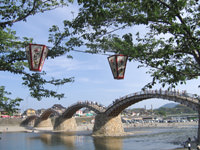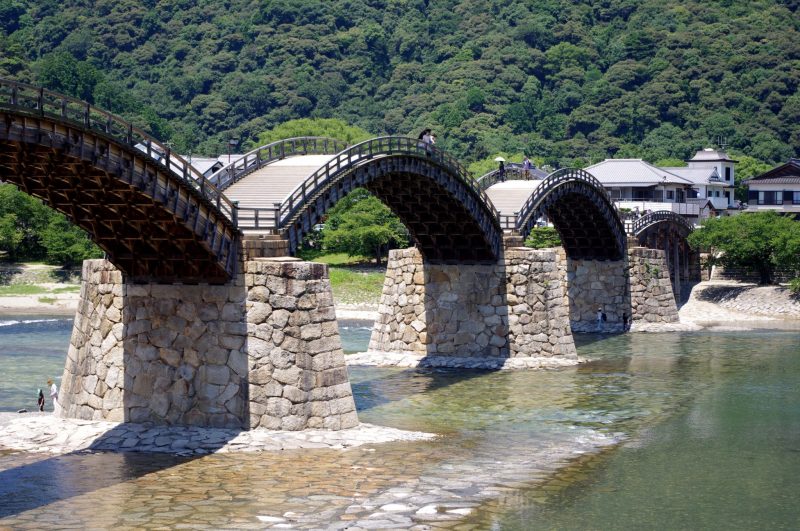
Naturally, when people visit Hiroshima, the first item on everyone’s list is the Peace Museum and Park. Then, many people might think about visiting Miyajima Island. But very few people consider visiting Iwakuni. Iwakuni is located just a short 15 minute ride from Hiroshima by Shinkansen to the Shin-Iwakuni train station, or a 40 minute train ride from Hiroshima on the JR Sanyo line to the Iwakuni station. Each station is only a short 15-20 minute bus ride from the major sights in Iwakuni.
Iwakuni was established by Kikkawa Hiroie in 1603, shortly after supporting Tokugawa Ieyasu at the decisive battle at Sekigahara. After building a castle on the mountaintop using the Iwakuni River for defense, he built seven towns which he named Kuka, Yanai, Komeya, Shio, Zaimoku, Uomachi and Tofu. All of the cities were laid out in a grid pattern which still exists today allowing visitors to easily find their way around. Bridges were built over the Iwakuni River which was often plagued with floods, but they kept being washed away. In 1673, Yoshikawa Hiroyoshi, grandson of Kikkawa Hiroie, decided to build a bridge strong enough to resist the floods. Large rocks were laid as foundation, and then small islands were built upon these foundations with stone piers constructed on the newly-formed artificial islands. Then, wooden arches were spanned between the islands. It took nearly a year to construct the bridge, and the bridge was made without a single nail. The wooden arches were rebuilt every 30 years, but the islands were used for over 275 years. But then in 1950, the bridge was completely destroyed by a large typhoon, but was quickly reconstructed exactly as before.





